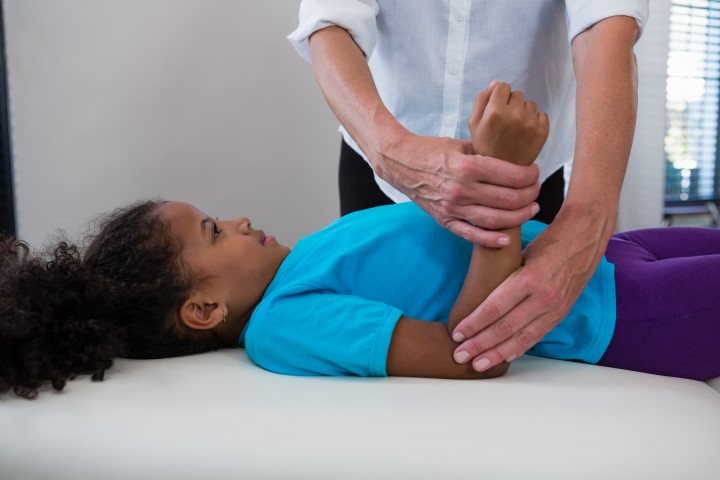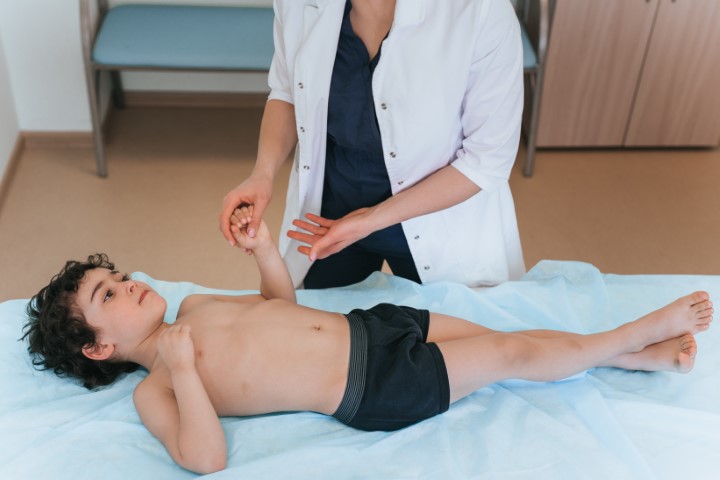Bio-degradable cards
Every card imaginable!
|
Bio-degradable cards Every card imaginable! Understanding Ehlers-Danlos Syndromes From Symptoms to Management
What is Ehlers-Danlos Syndromes?Ehlers-Danlos Syndromes, or EDS, are a group of inherited conditions that affect the connective tissues in the body. Connective tissues act like the body’s framework—they give structure and support to skin, joints, blood vessels, bones, and organs, and they help everything move smoothly. In people with EDS, genetic changes affect how collagen and other important proteins in connective tissue are made and used. Collagen is a key building block, so when it doesn’t work properly, it can cause a range of problems. These problems can show up in many ways. Some people notice joints that are very flexible, stretching further than usual, or skin that feels soft, fragile, or unusually stretchy. But EDS isn’t only about being bendy or having delicate skin. It can also lead to more serious complications, like blood vessels or organs being more prone to injury or tearing. At least 13 different types of EDS have been identified, and symptoms can vary widely from person to person. One person might have mild signs that only occasionally cause discomfort, while someone else might experience more serious challenges that need careful management and monitoring. This wide range of experiences is why EDS is considered a complex group of syndromes, with each type carrying its own mix of symptoms and risks. 
What are the symptoms of Ehlers-Danlos Syndrome?The symptoms of Ehlers-Danlos Syndromes (EDS) can vary widely, but some signs are more common and often noticeable early on. One of the most typical symptoms is joint hypermobility. This means joints can move further than expected, which might seem harmless at first. But for people with EDS, this flexibility can cause joints to partially or fully dislocate even with minor movements, leading to pain, swelling, and long-term joint problems. Everyday activities like opening a jar, walking, or climbing stairs can sometimes become more difficult or uncomfortable. Skin changes are another hallmark of EDS. People with the condition often have skin that stretches more than usual and feels soft or velvety. While this might sound harmless, the skin is fragile and prone to bruising or tearing, even from small bumps or scratches. Cuts and scrapes may take longer to heal, and scars or stretch marks can appear more easily, sometimes even from minor strain. EDS can also affect internal tissues. Blood vessels, organs, and other tissues may be more fragile, increasing the risk of serious complications like organ prolapse, hernias, or blood vessel rupture. While these complications are less common, they can be life-threatening and often require careful monitoring. Chronic pain is another major symptom. The combination of joint instability and repeated minor injuries can lead to ongoing discomfort in the muscles, joints, and soft tissues. This pain can affect day-to-day life and often needs a comprehensive approach to manage effectively. Certain types of EDS bring additional challenges. For example, vascular EDS, a rarer type, increases the risk of arterial rupture, which can be fatal without immediate attention. Some people also experience digestive problems, ranging from reflux to more serious issues like bowel complications. These differences show why care for EDS often involves multiple specialists, with treatments and monitoring tailored to the specific risks and symptoms of each individual. 
Diagnosis for Ehlers-Danlos Syndrome
How does Ehlers-Danlos Syndromes get diagnosed?Diagnosing EDS usually involves a combination of reviewing medical history, a detailed physical examination, and, in some cases, genetic testing. Doctors often look for joint hypermobility, using tools like the Beighton score, and examine skin for unusual elasticity, fragility, or scarring. Family history can also provide important clues, as EDS often runs in families. Genetic testing can confirm a diagnosis for certain types of EDS, particularly the rarer forms where the specific gene changes are known. However, not all types have a clear genetic marker. For example, hypermobile EDS (hEDS), the most common type, currently doesn’t have a definitive genetic test. In these cases, doctors rely mainly on clinical evaluation—looking at patterns of symptoms and ruling out other conditions.
At what age is Ehlers-Danlos Syndrome usually diagnosed?There isn’t a fixed age for an EDS diagnosis; it can happen at any point in life. Some children or teenagers are diagnosed early, especially if they show obvious joint hypermobility or skin differences. Others may not be diagnosed until adulthood, often because their symptoms are mild, subtle, or mistaken for other conditions. For many, the journey to a diagnosis can be long, involving visits to multiple specialists before a clear picture emerges. For the next section, we could expand on what the diagnostic process might feel like for someone in everyday life, including common challenges or delays in getting a diagnosis. This helps make it relatable and practical for readers. Do you want me to do that in the next section? 
Treatment and Management of EDS
Can EDS be cured?There is currently no cure for EDS. Treatment focuses on managing symptoms, preventing complications, and helping people maintain the best possible quality of life. Managing EDS usually involves a team of specialists, including physical therapists, pain management experts, and sometimes surgeons, depending on the severity of symptoms. Supportive measures, like braces or other assistive devices, can also help with daily activities and joint stability.
What is the treatment for Ehlers-Danlos?Treatment is highly individual because the symptoms and risks can vary so much from person to person. Physical therapy is central, helping to strengthen muscles around joints and improve body awareness to reduce the risk of dislocations and pain. Pain management can involve medications like non-steroidal anti-inflammatory drugs (NSAIDs) or other techniques suited to the individual’s needs. In some cases, surgery may be necessary, for example to stabilize joints or repair damaged organs or tissues. Lifestyle changes are also important, such as choosing low-impact exercises and avoiding activities that put excessive strain on joints. Overall, effective treatment is a mix of medical care, physical support, and practical adjustments to daily life. 
EDS: Insights and Clarifications
Does Ehlers-Danlos get worse with age?The way EDS progresses can differ widely between individuals. For some, joint pain, skin changes, and other symptoms may become more noticeable over time due to repeated stress on joints and tissue. However, many people can maintain an active and fulfilling life with careful management. Early diagnosis and a plan tailored to individual needs can make a big difference in managing how symptoms change over time.
Is Ehlers-Danlos Syndrome the same as hypermobile?Hypermobile EDS (hEDS) is the most common type of EDS, marked mainly by joint hypermobility. But EDS isn’t limited to this type—there are many forms, each with different symptoms. Some types may show more skin involvement or vascular issues rather than hypermobility. So while hypermobility is a key feature of hEDS, it doesn’t define all forms of EDS.
Can you have EDS and not be hypermobile?Yes. Some types of EDS, like Classical EDS (cEDS) or Vascular EDS (vEDS), may not have extreme joint flexibility but can have other serious symptoms, such as fragile skin or blood vessel problems. This highlights why a thorough evaluation is important—EDS can show up in many different ways.
Do people with Ehlers-Danlos Syndromes look younger?Some people with certain types of EDS, particularly Classical EDS, may have skin that looks smoother or more elastic, which can give a younger appearance. But this is not the case for everyone. Skin characteristics vary widely, so looking younger is just one of many ways EDS can affect the body.
What is a common misdiagnosis of Ehlers-Danlos?EDS is sometimes mistaken for other conditions because symptoms like fatigue, joint pain, or widespread aches overlap with disorders such as fibromyalgia or chronic fatigue syndrome. It can also be misattributed to mental health conditions in some cases. Misdiagnosis can delay proper care, so awareness among healthcare professionals and referrals to specialists experienced with EDS are important for accurate diagnosis and management. 
Exploring the Connection Between EDS and Other Conditions
Is Ehlers-Danlos on a spectrum?EDS is a spectrum of disorders, with each type showing its own mix of symptoms and genetic causes. Some people may have mild symptoms that only occasionally affect daily life, while others face more serious complications that require ongoing medical support. Seeing EDS as a spectrum helps explain why experiences can differ so much between individuals and why treatment needs to be tailored to each person’s situation.
Is Ehlers-Danlos linked with Autism and ADHD?Research indicates there may be a connection between EDS and neurodevelopmental conditions such as Autism Spectrum Disorder (ASD) and Attention Deficit Hyperactivity Disorder (ADHD). This link may be related to how the genes and biological systems involved in connective tissue also influence neurological development and function. People with EDS appear to have a higher likelihood of also experiencing ASD or ADHD compared with the general population. While the exact reasons aren’t fully understood yet, this highlights the importance of a care approach that considers both physical and neurological health. 
Ehlers-Danlos and Disability
Is Ehlers-Danlos a disability?EDS can be considered a disability when its symptoms make it difficult to carry out everyday activities. The impact varies a lot from person to person. Some people have mild symptoms, while others may face serious, life-changing challenges that affect work, mobility, or daily routines. Recognizing EDS as a disability is important because it can help people access the support, accommodations, and healthcare they need to manage their condition.
Can I get PIP for Ehlers-Danlos Syndrome?Personal Independence Payment (PIP) in the UK is designed to help cover extra costs for people with long-term physical or mental health conditions or disabilities. People with EDS may qualify for PIP depending on how the condition affects their daily activities and mobility. The assessment looks at your ability to carry out everyday tasks rather than the diagnosis itself. Providing clear details about how your symptoms impact your life is essential when applying, as this helps ensure you get the support you need.
© 2024 The Card Project Uk Ltd
VAT: 453 2087 06
|